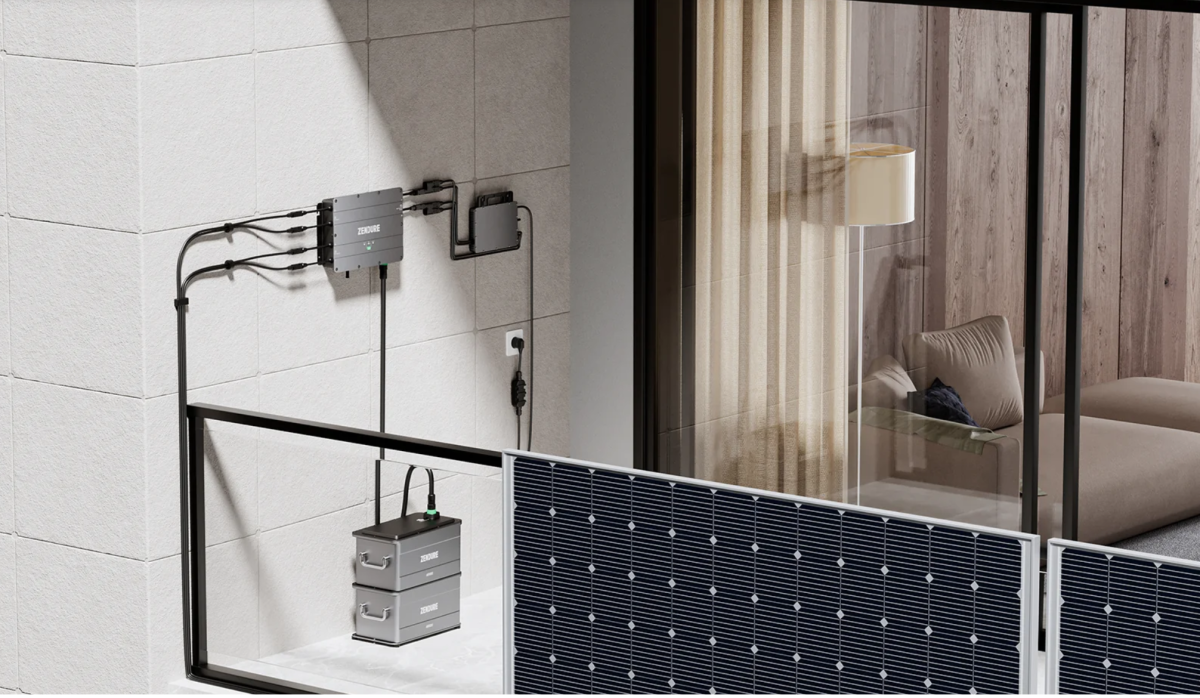Price for stackable storage battery for balcony power plants is fixed
A storage system for balcony power plants that consists of up to four stackable batteries and a control unit and is compatible with 99 percent of all common solar panels and micro-inverters: That has cendura with Solarflow, which is simply connected between the solar modules and the inverter as an extension to existing mini-PV systems.
In contrast to conventional balcony power plants, Solarflow can store the solar energy gained during the day instead of feeding it into the local power grid without remuneration, as is usually the case. This also means that thanks to the storage device, the energy can be used at night to ensure the power supply is sustainable and cost-effective.
The first plug-and-play storage system consists of a PV hub and up to four batteries, which are protected against dust and water according to IP65, so that, like the other components of the mini PV system, they can also be used outdoors on balconies, terraces or placed in the garden.
The great advantage of LiFePo4 (LFP) batteries, which have a single storage capacity of 960 Wh, is that they can be connected through wireless stacking. With up to four batteries, customers have a total capacity of up to 3,840 watt hours – ideal for anyone who uses two to four kilowatt hours of electricity per night.
Thanks to a PV hub equipped with an 800 watt output and an intelligent battery management system, excess energy is stored in the associated LFP batteries.
The storage system is of course also adapted to the digital age and can be connected to the smartphone via a built-in Bluetooth connection. In this way, owners can control the PV hub with an app from anywhere and check the charge level of the batteries. The app also shows how much energy the solar panels are currently generating.
Editor’s Recommendations
And what about the installation? According to Zendure, assembly and installation of the system is extremely easy. The solar modules and the inverter are connected using the usual MC4 connectors.
According to Zendure, the advance sale of Solarflow starts on April 6th and ends on May 15th. If you want to buy the storage system, you have to dig deep into your pocket at a price of 1,399 euros. The price applies to a PV hub as the control center and a battery with 960 watt hours.
In advance, however, the company has sold 200 euro vouchers for 50 euros, which can be redeemed when making a purchase. Anyone who was able to purchase a voucher gets Solarflow at a price of 1,199 euros and has effectively paid 1,249 euros.
But is it all worth it? The portal computer base made an interesting calculation: If you assume that the storage system is fully charged 275 times a year and that the stored energy is consumed, you can expect to save 105 euros a year at an electricity price of 40 cents per kilowatt hour. In order to get the money back after ten years, the set consisting of a PV hub and a battery with 960 watt hours should not cost more than 1,050 euros.
After all, Zendure grants a ten-year guarantee on Solarflow.



